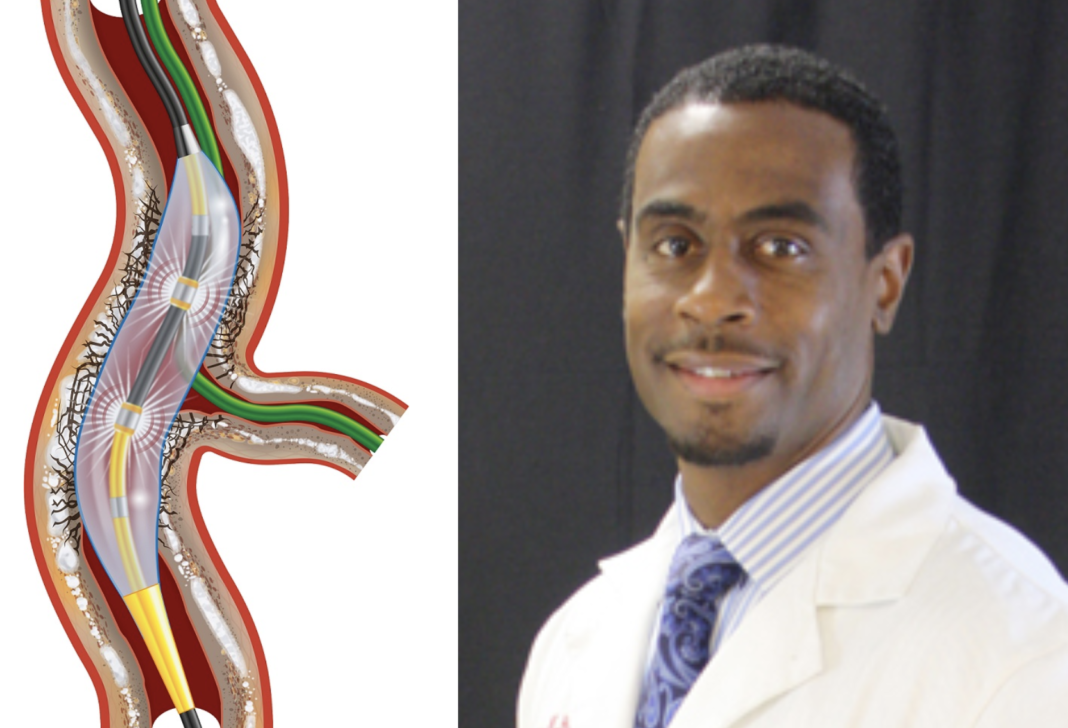St. Francis Medical Center is now performing an innovative procedure called Shockwave Intravascular Lithotripsy (IVL) to clear calcium deposits in clogged heart arteries.
Based on the same technology used to break up kidney stones, the Shockwave IVL System uses sonic waves to fracture calcium deposits within a blood vessel and allow the deployment of a stent—a small mesh tube that holds the artery open and improves blood flow.
The minimally invasive procedure, which takes about an hour to perform, received U.S. Food and Drug Administration (FDA) approval in late February.
“Shockwave lithotripsy therapy is a useful way to pre-treat calcified coronary arteries. Calcium deposits are typically very hard and can impede the delivery of coronary stents,” said Edward Wingfield, MD, an interventional cardiologist with St. Francis Medical Center and Hamilton Cardiology Associates. “Traditional methods of treating calcified plaque add significant risk to the patient. However, Shockwave therapy delivers minimal tissue trauma while softening hard calcified plaque. This allows for the safe and effective delivery of stents to maintain an open coronary artery. The use of shockwave therapy reduces patient’s procedural risk while increasing the scope of patients who can benefit from coronary revascularization.”
The Shockwave procedure works by threading a catheter through an artery to the location of the blockage and inflating a special balloon. An electrical discharge then vaporizes the fluid inside the balloon, creating a rapidly expanding and collapsing bubble that generates sonic pressure waves. The waves break up the calcium inside the vessel without harming surrounding healthy tissue. After the calcium is broken up, a balloon fully expands the vessel, and a stent is implanted to improve blood flow.
Prior to the Shockwave procedure, patients would need to undergo atherectomy, which involves shaving or vaporizing plaque using tiny rotating blades or a laser on the end of a catheter, or coronary artery bypass surgery. Shockwave offers the same plaque modification without the risks associated with these other procedures.
St. Francis heart specialists have already used a version of the Shockwave device to treat peripheral artery disease and to open the femoral/iliac arteries in preparation for transcatheter aortic valve replacement (TAVR).
“The Shockwave procedure is a major innovation for treating coronary artery disease,” said Dr. Wingfield. “It’s one more tool we have to treat these calcium blockages. We’re excited that we have this option available for our patients.”
To make an appointment with a St. Francis physician, visit www.stfrancismedical.org or call 1-855-599-SFMC (7362).





